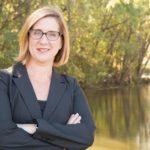I recently received a letter from a trainer of clinical providers at a large insurance company asking me to educate them on what bilingual education is in public schools near border towns. Here’s the letter I received.
I am reaching out to see if you have any resources or information to guide me, educate me on languages used in public schools near or in border towns of Texas. Specifically, do we know if the public schools provide academic instruction in Spanish only? English only? Bilingual instruction? I ask this question as I have been in communication with various SLPs who provide therapy services to many of our members. My understanding (warning/alert: as a monolingual English speaker who is trying to educate herself as best as she can) is that as SLPs, we need to look at exposure, language knowledge. We hear from SLPs that children get Spanish only in school so they assess them with monolingual Spanish language/articulation assessments. Should we assume that they are getting exposure to English both in school or at least out in the community, through television, etc.? Therefore, we really should still see a bilingual assessment of their possible language impairments? Allowing the SLP to “give credit” to all language knowledge?
From my perspective in Central Texas, I can tell you that I have seen “bilingual education” that has ranged from a lot of English and a few words in Spanish, to a lot of Spanish and a few words in English, and everything in between. That said, I’ve never lived in a border town and my experience in those schools is limited. So I reached out to three colleagues who could answer these questions better than I could.
 Julio Rodriguez, Bilingual Diagnostician
Julio Rodriguez, Bilingual Diagnostician
I feel that growing up on the border is a unique experience. You often hear people say we’re neither from here nor there. We’re not entirely Mexican, but we’re not entirely American (or Texan, for that matter). I now see that most often, the home language in border homes is Spanglish, with all its own grammar and code switching rules. Sometimes, you get parents like mine who decide that Spanish will strictly be the home language. Other times, you get parents who feel they now live in the US and want their children to quickly assimilate and use English. But really, what I see the most is Spanglish in the community. It’s used by teachers, principals, workers, business owners… pretty much everyone uses it in their day-to-day interactions. Truly monolingual people don’t really exist on the border because everyone learns and uses at least a little of both languages.
My own experience, going to school on the border, was bilingual education up to 1st grade. 2nd grade brought a strict, English only in the classroom rule, but there was a level of ESL support for those of us still transitioning. 3rd grade and on, was English only instruction. That left me with a well developed Spanish BICS, and a mediocre English CALP. All my reading and writing instruction was in English. I didn’t consider myself truly bilingual (oral, reading, writing) until after I decided to make Spanish one of my undergraduate majors in college.
 Dr. Christine Fiestas, Assistant Professor, Texas A&M University-Kingsville
Dr. Christine Fiestas, Assistant Professor, Texas A&M University-Kingsville
From my experience in both Central and South Texas, there is no hard and fast rule. School districts make individual decisions about type of bilingual instruction, which can even vary across campuses, from classroom to classroom, and even by individual students. For example, in one early exit bilingual program one teacher will only support in Spanish when necessary for certain children in K and 1st, whereas another teacher might provide instruction in both languages consistently to all, or subject specific with math usually being the first in all English. I do see incredible variation of the same model within the same school even in bilingual programs of the same grade. Teacher proficiency and philosophy on effectiveness of bilingual education really plays into this. In El Paso there are two-way bilingual education programs in some schools. Most Texas border towns have their own individual school districts. Small districts vary greatly in their approach while larger districts like Laredo and Brownsville are more uniform across schools in their implementation of bilingual education. I guess all this to say, assume nothing and have a conversation with the teacher about the language of instruction for a particular child.
 Lyena Escobar Garza, Bilingual Speech-Language Pathologist
Lyena Escobar Garza, Bilingual Speech-Language Pathologist
To my knowledge all school districts in the Rio Grande Valley have some form of bilingual education. Most if not all districts here require that teachers obtain bilingual/ESL certification. Some districts even have dual language programs. All students are exposed to some degree of English in the schools, but that differs depending on the program. I do not believe any of the schools provide Spanish only instruction, but the percentage of Spanish instruction is typically greater in the lower grades.
Most students will be exposed to some English at school and to varying degrees of English in the community and via TV, etc; however, it has been my experience that the students in districts closer to the border are more proficient in Spanish, and Spanish is more prevalent in these communities.
As far as testing goes, it’s definitely case by case. I always use formal and informal measures. I usually begin my testing in the language the student is exposed to the most after review of case history/academic history. If for example I use a Spanish assessment and the student’s scores are within the average range, I do not formally assess the student in English. I would however collect a language sample in both languages and make note of any characteristics of Spanish-Influenced English. If the student’s scores are low in Spanish, then I look at the tests he/she scored low in and test those skills in English. I follow the same process if I begin testing in English.
The difficult cases are when scores are low in both languages. When this occurs, I obtain several language samples in both languages and determine if there are patterns of weaknesses across formal and informal measures.

And I will add to what Lyena said. Dynamic assessment is a critical component in these evaluations. We need to identify deficits, teach those skills, and see if a child learns them quickly or not. It they don’t learn skills quickly, that is an indication that more intensive support is needed. If they do learn new skills quickly, that is an indication that they have not had that learning opportunity yet.
So, there you have it. Bilingual education comes in all shapes and forms. Ask questions and don’t make assumptions!
For the latest news on bilingual education, check out the National Association for Bilingual Education news site.
For more information about Bilingual Assessment you can find great courses in our online course library.
Difference or Disorder for Speech.


 Julio Rodriguez, Bilingual Diagnostician
Julio Rodriguez, Bilingual Diagnostician Dr. Christine Fiestas, Assistant Professor, Texas A&M University-Kingsville
Dr. Christine Fiestas, Assistant Professor, Texas A&M University-Kingsville Lyena Escobar Garza, Bilingual Speech-Language Pathologist
Lyena Escobar Garza, Bilingual Speech-Language Pathologist

Interesting question and interesting responses. It seems it is not much different than what we experience in some of our schools here in north Texas.
That’s true here in Central Texas as well.
Hallelujah! This is exactly the information I needed to have right now. Excellent article with clear direction. Praise Jesus ❤️ You just made my work more manageable.
Happy to help!
Do you have a questionnaire for gathering data regarding languages of exposure? If so, I’d love to have it! I also struggle with ensuring that language proficiency has “some” measure before moving into the evaluation process. I have students who I feel the parents indicate English on a Home Language Survey for the school, but then the teacher working with the child can see that there is some influence in Spanish, even if it’s just those “few” words.
Hi Orlanda,
I just sent you via email a couple of things that we have used in our practice.
Best,
Ellen
Could I get the questionnaire for gathering date regarding language exposures? I have this same issue. My email is jhartis@dpisd.org
Thanks
Hi Jen,
We have three documents for you to download to help with parent intake and home language information gathering. Go to our Evaluation Resources Library from the For SLPs tab above or click Evaluation Resources.
Scroll down to:
Home Language Survey Suggestions
Language History Form
Parent Questionnaire for Language History
Best Regards,
Scott